Top 20 attractions in Iceland
In this article, you can find our selection of the 20 top attractions in Iceland! All around the country, here are the places you should not miss during your trip.

Route 1 is a national road that runs across Iceland. It consists of a total length of 1,322 kilometers. Most of the places in this guide follow Route 1. Others aren't directly accessible from it but are still easily accessible (except for Landmannalaugar). However, no matter where you want to head during your trip, you will for sure find some jewels to visit in this guide!
-
Snaefellsnes Peninsula
Let’s begin with the Snaefellsnes Peninsula. Located between the Westfjords and the Reykjavík capital, the Snaefellsnes Peninsula is a popular destination in Western Iceland. It is known for its stunning sceneries, and with numerous fascinating natural elements to discover, the area is sure to appeal to all. Uniquely diverse landscapes, fascinating folklore, and food sources make this area a must-see for anyone wanting to experience Iceland. From lava fields and craters to the famous Kirkjufell Mountain, here is a selection of places for you:
Kirkjufell

Photo: Daniel Ferrandiz Mont
Arnarstapi

Photo: Josephine Lin
Arnarstapi is a small fishing village at the foot of Mount Stapafell. A very interesting old path follows the coastline where you can see old lending places of fishermen, lots of birds, and pass through a lava field. Don’t miss Gatklettur, the Stone bridge or the Bárðar Saga Statue.
Ytri Tunga Beach

Photo: Jvn.Photo
Ytri Tunga is a beach by a farm of the same name. Unlike many of the beaches in Iceland that are black-sanded, Ytri Tunga has golden sand. It is one of the most reliable place in Iceland to see seals. The ones that haul out here are Harbour Seals, one of the two common species found in Iceland. The other is the Grey Seal!
Want to discover the Snaefellsnes Peninsula with us? Check out our tour! Check out our Instagram guide for an image preview of the peninsula!
-
Þingvellir
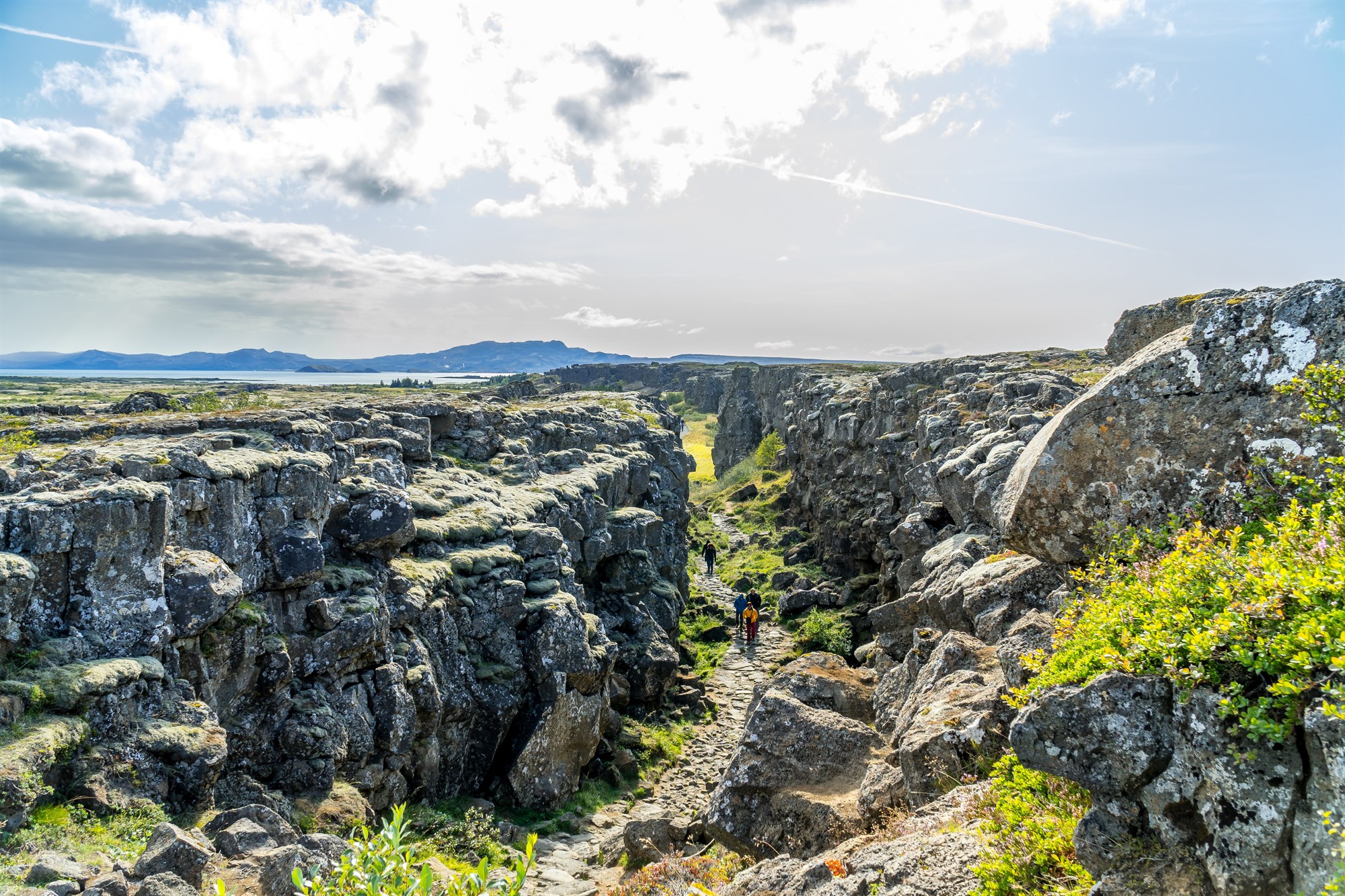
Photo: Alex He
Þingvellir (you can also write Thingvellir) is a historic site and national park in Iceland, east of Reykjavík, in the heart of the Golden Circle. No place in Iceland exemplifies the history of the country and its people better than this place. Indeed, it is known for the Alþing (Althing), the site of Iceland's parliament from 930 to 1798. On the site, you will also see the Þingvellir Church and the ruins of old stone shelters. The area is part of a fissure zone running through Iceland, being situated on the tectonic plate boundaries of the Mid-Atlantic Ridge. The faults and fissures of Þingvellir make evident the rifting of the earth's crust. There, you can also see the famous Öxarárfoss waterfall that flows from the river Öxará over the Almannagjá.
Want to discover Þingvellir and the Golden Circle with us? Check out our tours here & here!
-
Geysir
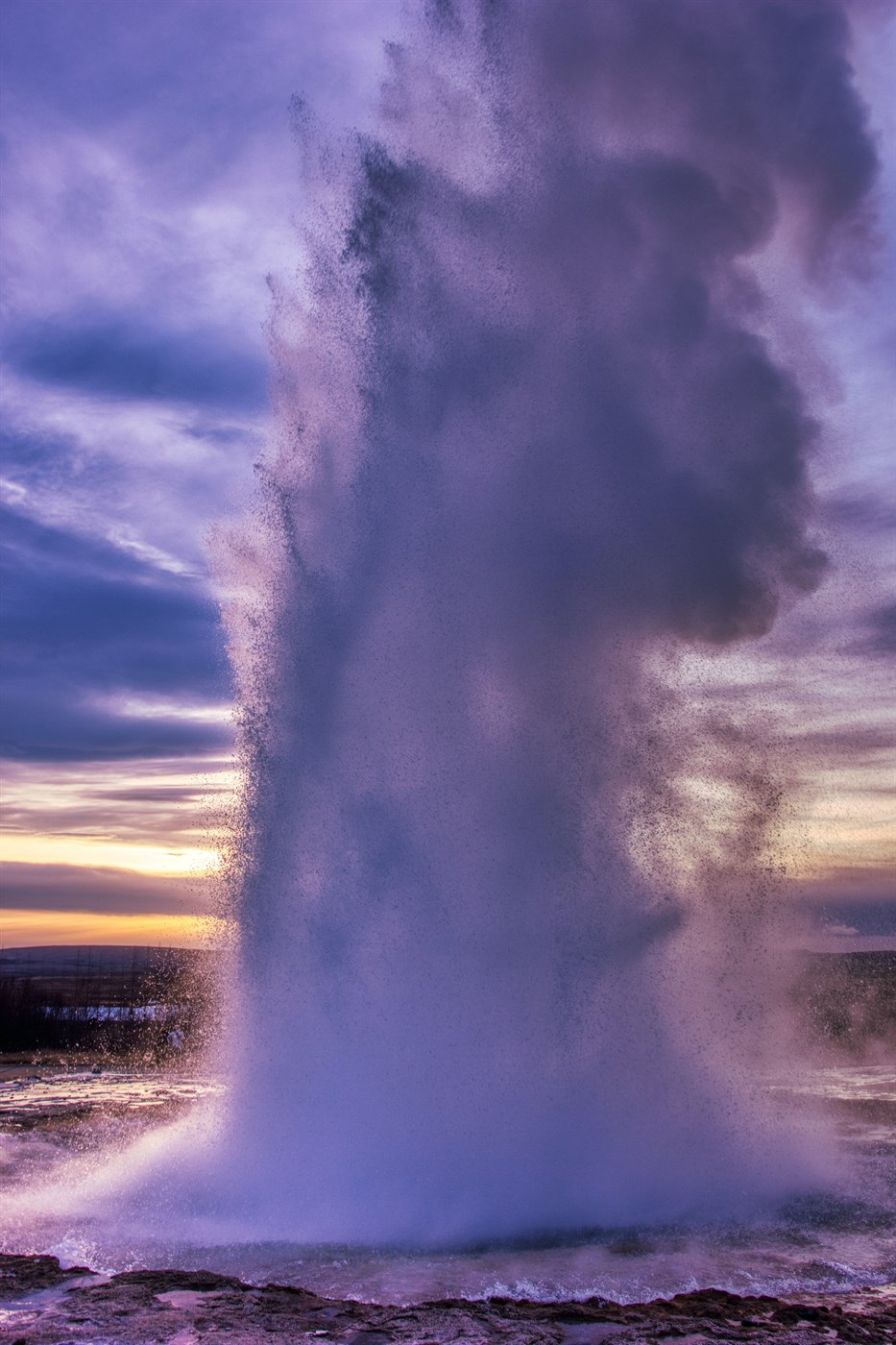
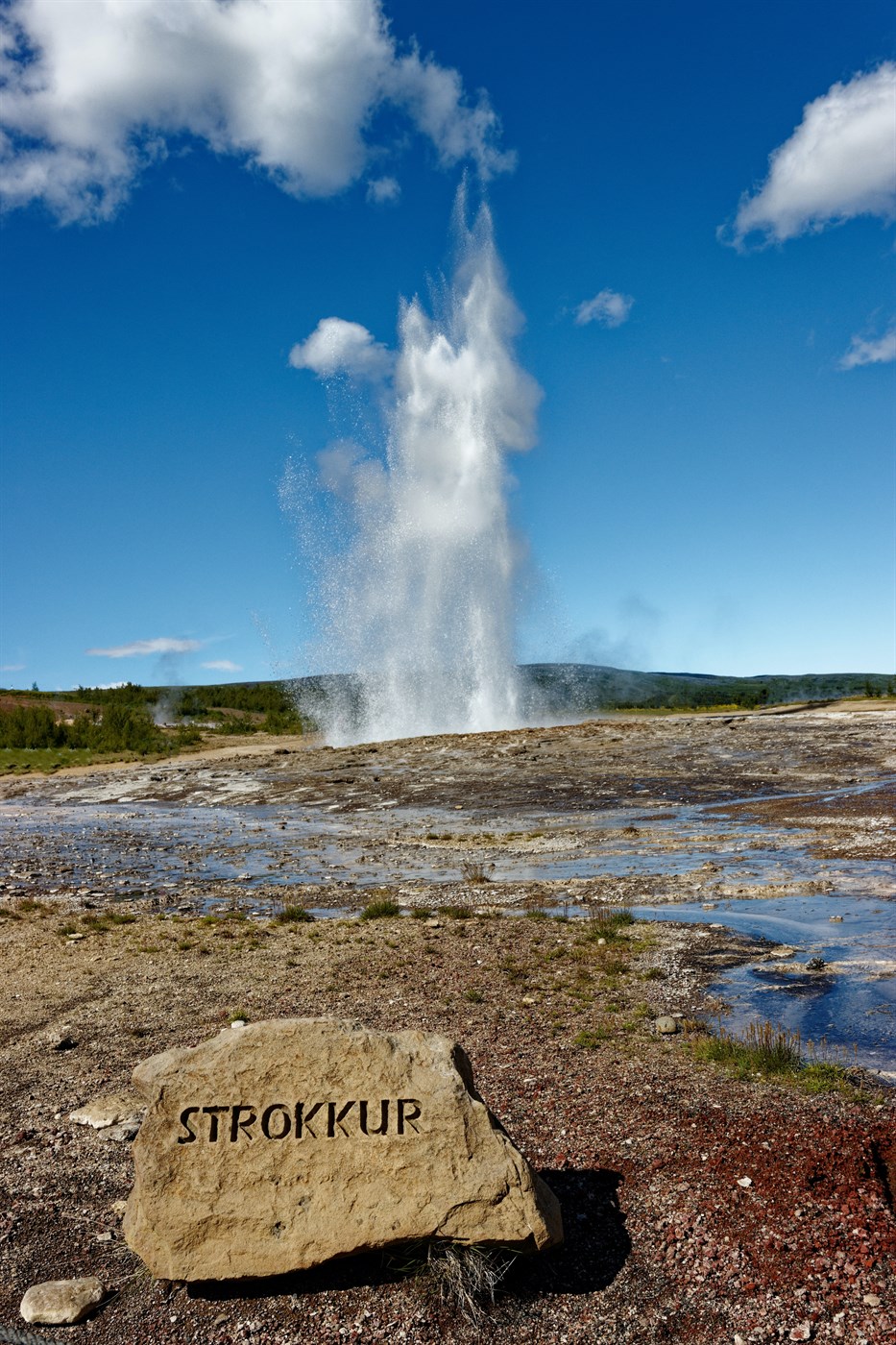
Photos: Kyle Burton & Yves Alarie
Geysir, also known as The Great Geysir, is a geyser in southwestern Iceland. Its name comes from the English word geyser but also from the Icelandic verb geysa from Old Norse. It was the first geyser described in a printed source and the first known to modern Europeans. This is Iceland’s most famous and spectacular geyser. It is located in the Haukadalur Valley, along the Golden Circle. Although the Great Geysir has stopped erupting, Strokkur just beside is now Iceland’s most active geyser. Every 4-10 minutes, the water eruption gives a magical show. But how does it work? Snow and rain water that comes from the underground reaches the surface through fractures in the rock. As the water gets closer to the surface, its pressure drops and the water flashes into steam as a geyser. These hot springs have unconstricted plumbing systems.
Want to discover Geysir and the Golden Circle with us? Check out our tours here & here!
-
Gullfoss

Photo: Esse Chua
Gullfoss, also known as the Golden Falls, gets its name from the golden hue that often shines in its glacial waters. This particular gorge was formed by flash flood waters that forced their way through the cracks in the basalt lava layers. The Hvíta river flows southward, about a kilometre above the falls it turns suddenly to the right and flows down into a wide curved three-step "staircase" and then plunges in two stages. The water in Hvítá river comes from the glacier Langjökull, before cascading 32 meters (105 feet) down Gullfoss two stages. This spectacular display of nature's raw power is truly stunning. Through the seasons, this huge waterfall amazes whether it is snowy and icy or surrounded by green.
Want to discover Gullfoss and the Golden Circle with us? Check out our tours here and here!
-
Glymur
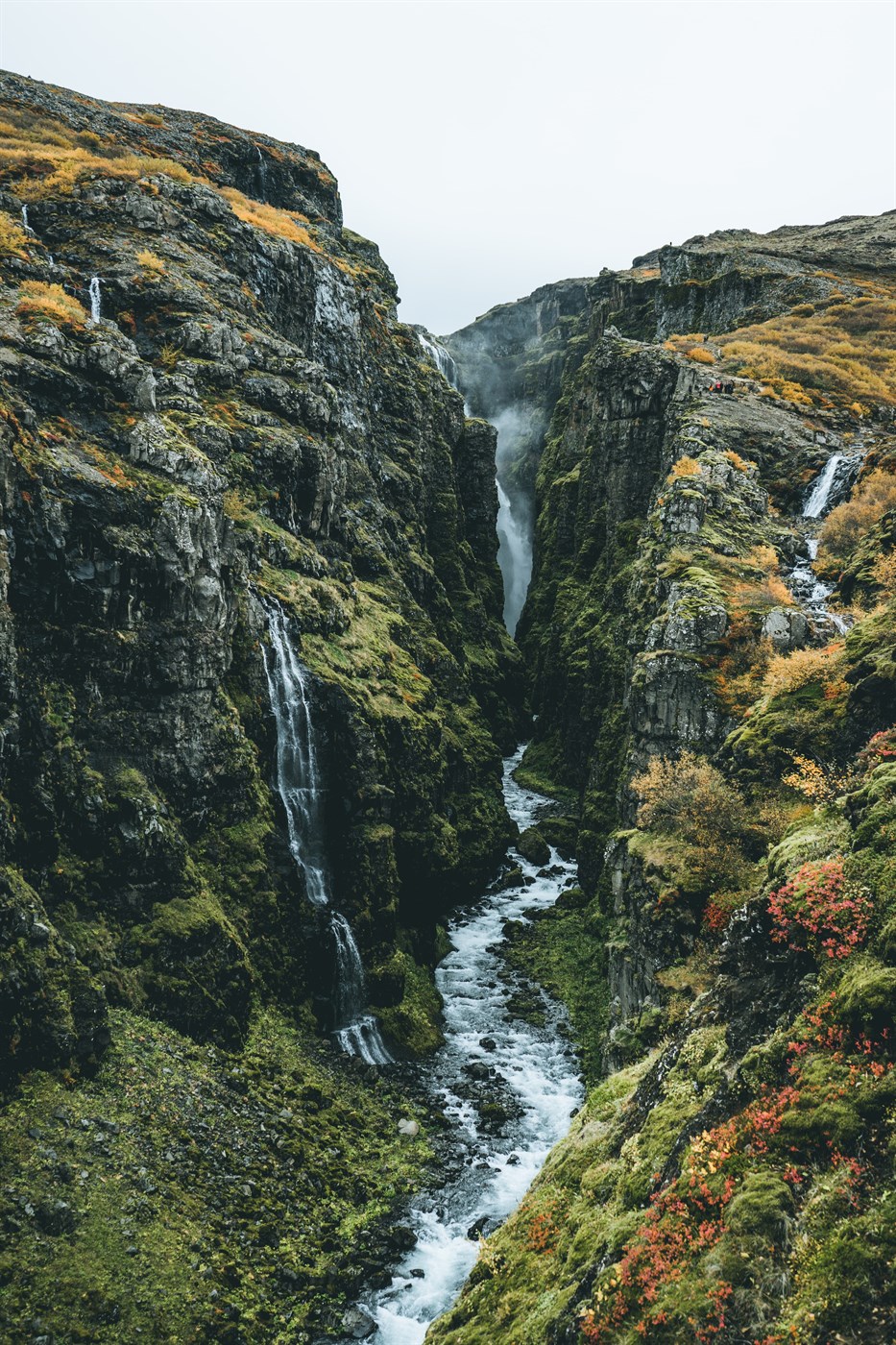

Photo: Alexander Milo & Chris Aerial View
If you love hiking, you should definitely go to Glymur. This waterfall is located in Hvakfjordur fjord in West Iceland, around 70 km from Reykjavík. You can only get to it by hiking. It is the second highest waterfall of Iceland at 198 meters (650 feet), so you can imagine that reaching the top can be quite challenging. Indeed, during winter, you have to cross a river to get there! From June to August, a log is in place for the first river crossing. The hike will also lead you into a cave and through rocky areas. You really get some adrenaline rush up there! However, once at the top and even on your way up, you will get to see epic sceneries and views. Two trails allow to reach Glymur: you can hike along the South Side or North Side. In order to have the best view on the waterfall, you should choose the South Side trail. The North Side trail is less challenging, you can carefully cross the river on the top of the waterfall to reach the South Side (depending on how big the river is on that day)
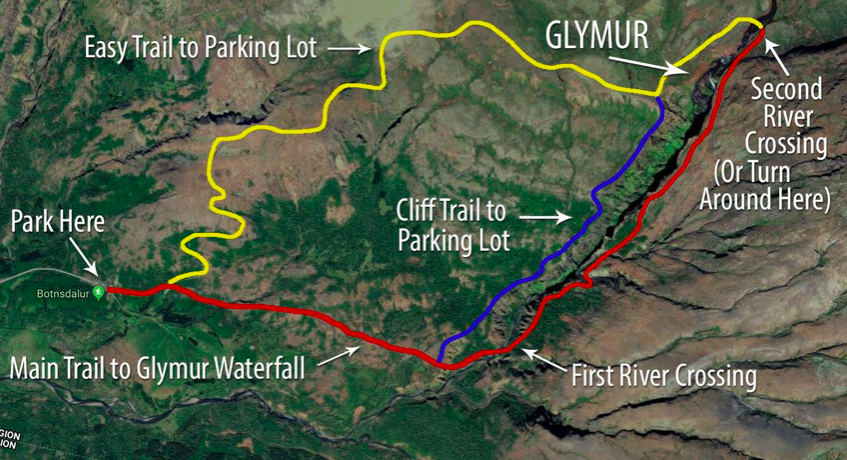
Map: Earth Trekkers
-
Reykjanes Peninsula & Fagradalsfjall volcano

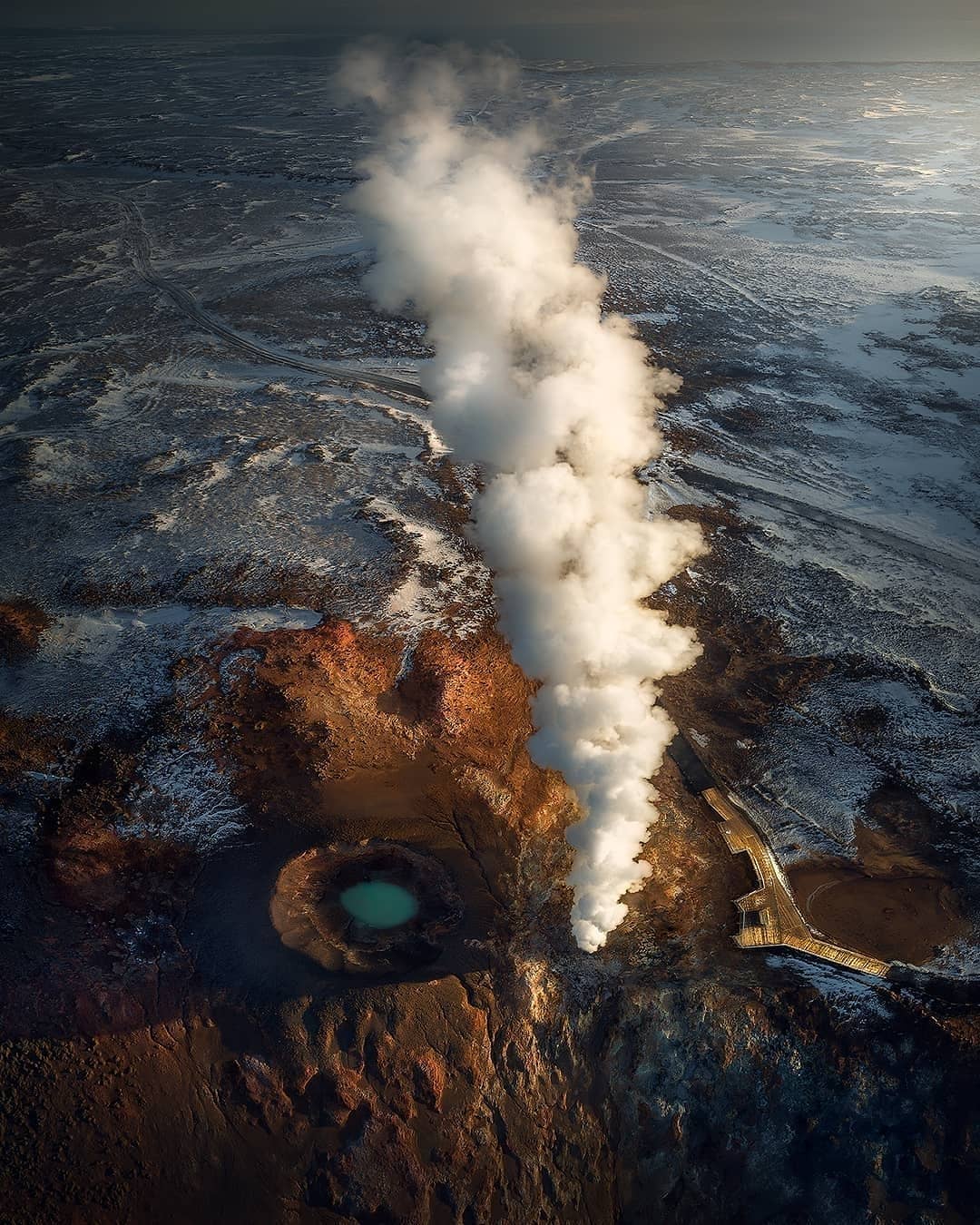
Photos: Arnar Kristjansson & Arnar Kristjansson
The Mid-Atlantic ridge comes ashore on the Reykjanes peninsula. The area, with its diversity of volcanic and geothermal activity, is a Geopark and is the only place in the world where the Mid-Atlantic Ridge is visible above sea level. It is home to many important geological formations, some of which are utterly unique, including numerous types of volcanoes in at least four separate volcanic zones, with hundreds of open fissures and faults. That’s what led to the newest eruption of the Fagradalsfjall volcano: on the 19th of March, the dormant volcano made its first move in 800 years. This new attraction is definitely a once-in-a-lifetime experience so don’t wait to visit it while it is still active!
What you should not miss on the peninsula:
- The Bridge Between Continents at Sandvík, a small footbridge over a major fissure which provides clear evidence of the presence of a diverging plate margin. The bridge was built as a symbol for the connection between Europe and North America.
- Brimketill, a lava rock formation in the shape of a pool on the edge of the ocean.
- Gunnuhver, the mud pools and steam.
- Karlinn, a 50-60 meters (165-197 feet) high sea-cliff eroded volcanic plug.
- The very famous Blue Lagoon, to relax and discover this Icelandic jewel.
Want to discover this epic new volcano on a tour with us? Check out our tour! Here's our tour of the Reykjanes Peninsula! You can also check out our articles to learn more about the volcano, here and here!
-
Seljalandsfoss & Skógafoss


On the left: Seljalandsfoss by World Face
On the right: Skógafoss by Charlotte St. James
Seljalandsfoss is a unique waterfall in the river Seljalandsá, about 30 km west from Skógar. It drops 60 meters (197 feet) and is part of the Seljalands River that has origin in the volcano glacier Eyjafjallajökull. A foot path is behind it, allowing visitors to walk behind the waterfall. It is the only known waterfall of its kind, where it is possible to walk behind the water curtains, a magical experience! But that’s not it, just nearby you can found Gljúfrabúi waterfall, a hidden gem just a few minutes walk away from Seljalandsfoss. The waterfall is partially obscured by the cliff rock, but hikers can follow a trail to enter the narrow canyon where the water plummets to a small pool.
Skógafoss is one of the biggest waterfalls in Iceland, with a drop of some 60 meters (226 feet) and a width of 25 meters (82 feet). It is located on the Skógá River in the South of Iceland and is very easy to access, you can even clearly see it from Route 1. Often there are beautiful double rainbows there! Skógafoss can also be viewed from the top as a steep staircase leads to an observational platform above the cascade. This waterfall is only 25 minutes drive away from Seljalandsfoss! You can easily visit both, one after the other.
Want to discover these two beautiful waterfalls with us? Check out our tour! Check out our Instagram guide for an image preview of the South coast!
-
Landmannalaugar
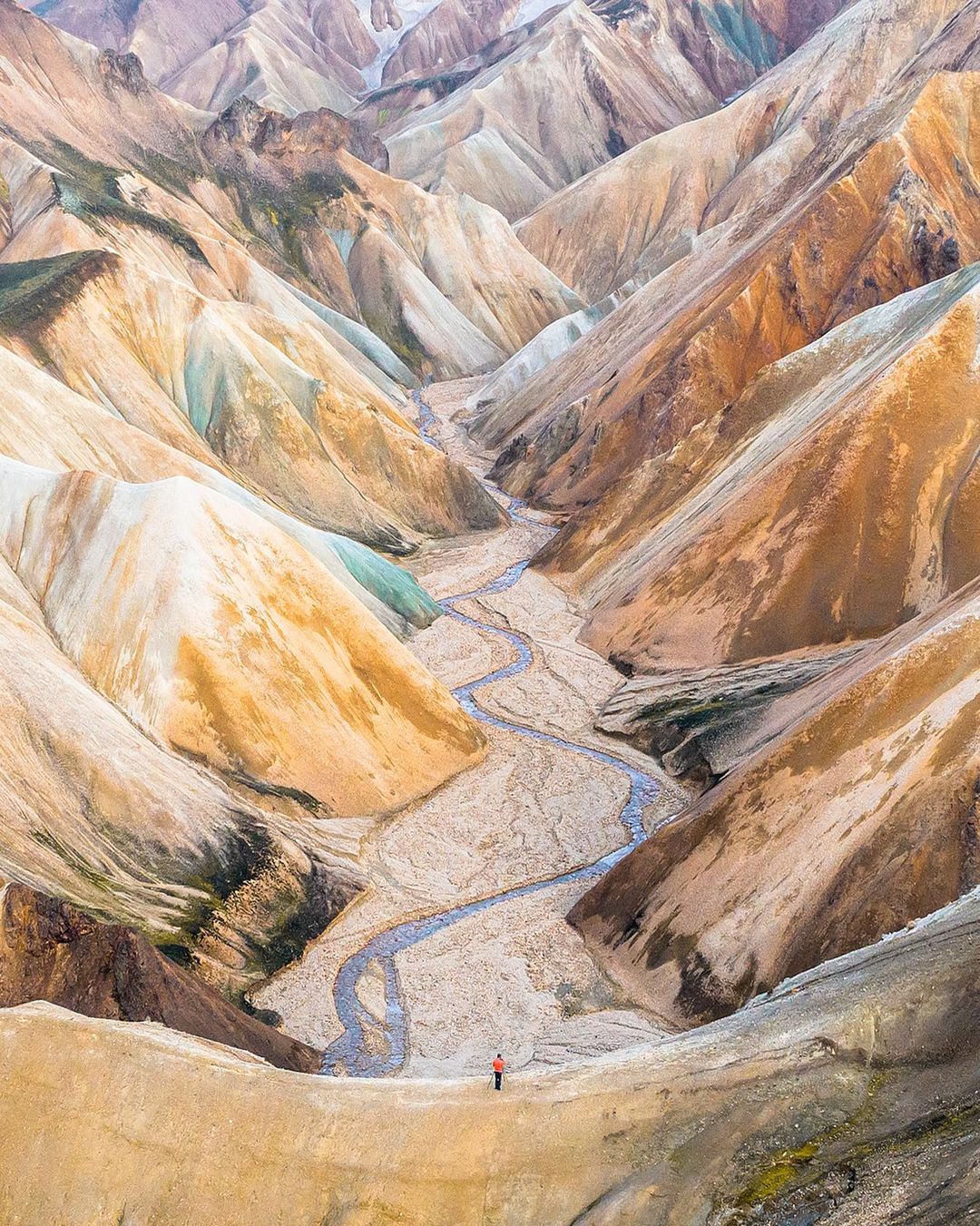
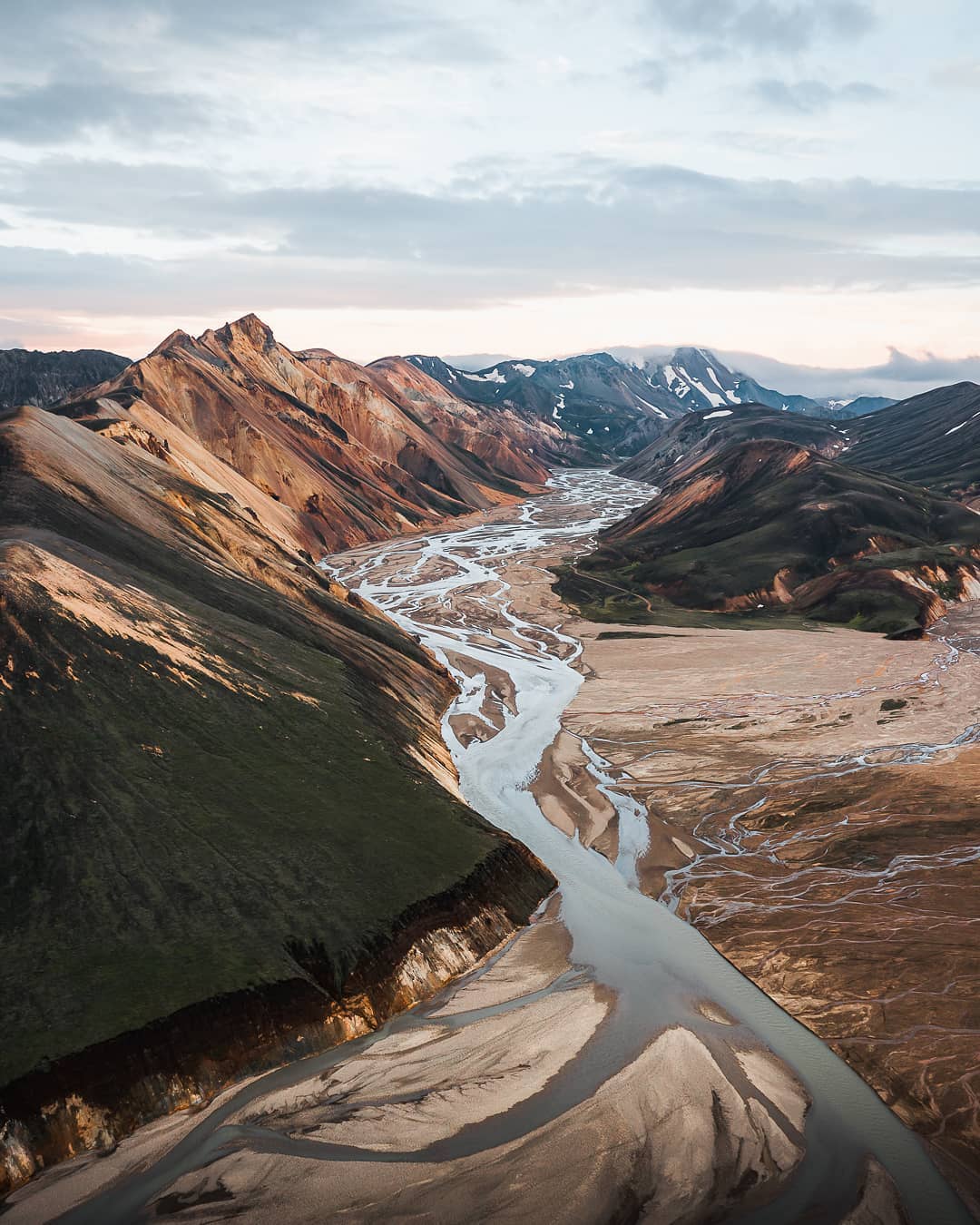
Photos: James Rushforth & Aurelien Vivier
Landmannalaugar is a large area in the Fjallabak Nature Reserve in the Highlands of Iceland. The mountains of the valley are easily recognisable since they are very colourful — red, pink, blue, green and yellow, which contrast a lot with the dark-black lava field next to it. Landmannalaugar is usually the starting point of a four-day-long hiking trail called Laugavegur — one of the top 20 hikes in the world — whose name means "The Landmannalaugar Trail”. The area is known for its natural geothermal hot springs and surrounding landscape. Due to this beautiful scenery, Landmannalaugar is often considered the “Pearl of the Highlands”. In English, it has been translated “People’s Pools”, since the area was historically used as a geothermal retreat. Nowadays, it is still really appreciated by the visitors who can enjoy a time of relaxation after a day of hiking. However, due to their unpaved terrain, highland F-Roads (mountain roads) are only accessible during the summer months (from June to September). The river-filled and bumpy F-Roads, unfortunately, don’t permit standard vehicle to drive there and access the area. 4x4 or Superjeeps are recommended.
-
Reynisdrangar & Vík beaches

Photo: Chris Ried
Reynisdrangar are impressive rock formations situated near the shore of Reynisfjara, a black‑sand beach on the South Coast of Iceland. It is located just beside the small fishing village of Vík í Mýrdal. According to local Icelandic folklore, these large basalt columns were once trolls trying to bring ships from the ocean to shore. However, these trolls were weak and stayed late at night; dawn came on the horizon and turned the trolls into the solid stone that we know today. Since Vík beaches are very famous and worth the stop, you should also visit Dyrhólaey rock arch and the cliffs nearby Reynisfjara. If you are visiting from May to August, you’ll probably get the occasion to see many seabirds, especially in Dyrhólaey, known as one of the best places to see puffins. However, visitors in Reynisfjara must be aware of the potential dangers at the beach. The waves — called sneaker-waves — are very violent, often pushing far further up the beach than some would expect. Even on still and calm days, they can unexpectedly appear.
Want to discover these beautiful black-sand beaches with us? Check out our tour! Check out our Instagram guide for an image preview of the South coast!
-
Skaftafell National Park & Svartifoss
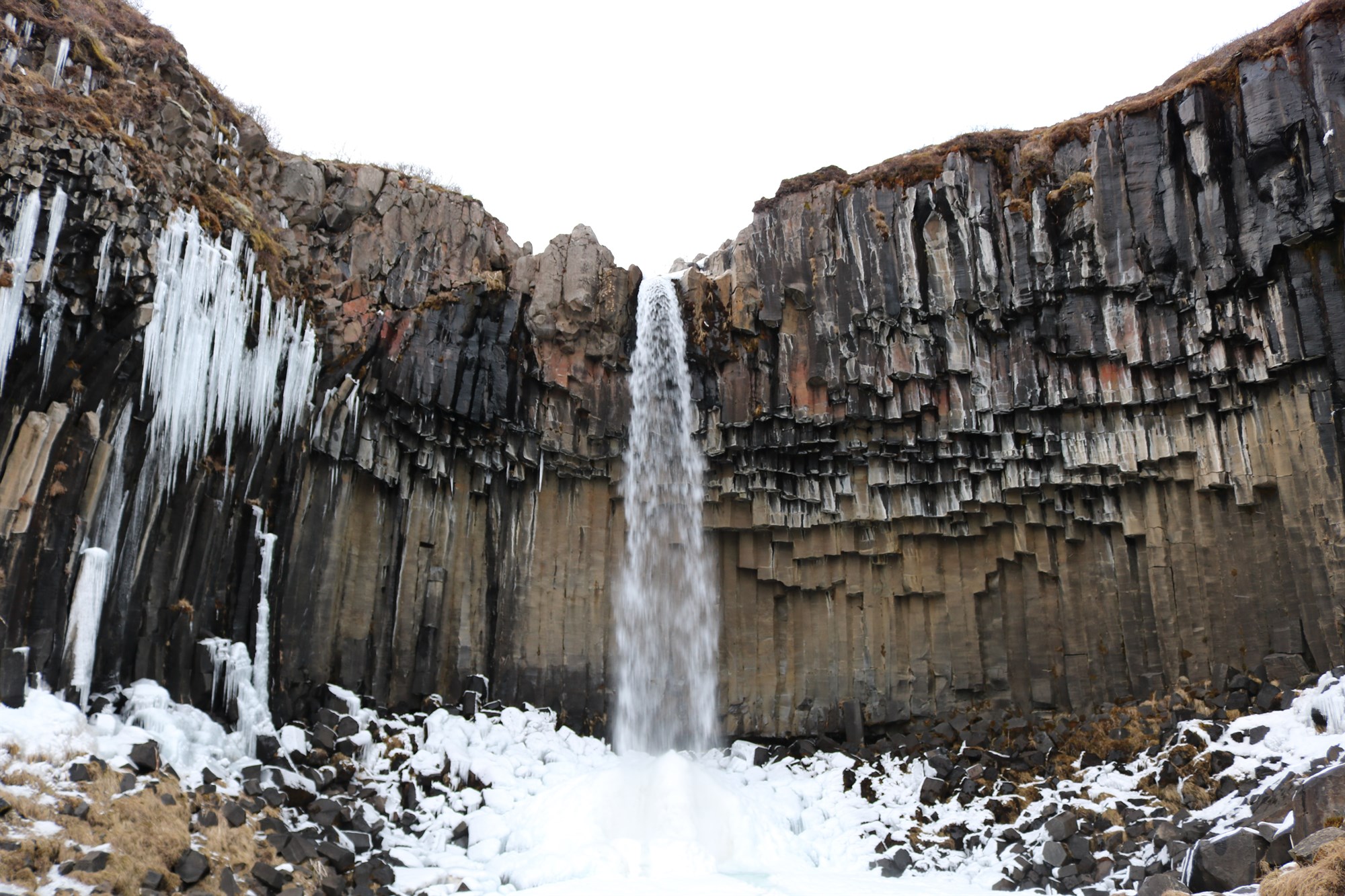
Photo: Toby Elliott
Skaftafell is located in the South East of Iceland, in the nature reserve Vatnajökull National Park. It offers scenic landscapes and hiking trails, the perfect combo with favorable weather conditions. Both the beautiful Svartifoss and the Skaftafellsjökull glacier are easily accessible by a short trail. Svartifoss is one of the most popular sights in the park. It is surrounded by dark lava columns, which gave rise to its name. For those who want to reach further out, trails to Morsárdalur valley and Kristínartindar mountain peaks are perfect. Skaftafell is also a nice base camp for those who seek to climb Iceland‘s highest mountain peak, Hvannadalshnjúkur. The area is particularly notable for its rich flora, growing between sands and glaciers. This atmosphere creates a nice contrasting scenery. From waterfalls to glacier lagoons along with black sand deserts, the Nature Reserve is definitely a must-see in South Iceland.
More information about hiking trails are available here.
Check out our Instagram guide for an image preview of Skaftafell!
-
Jökulsárlón Glacier Lagoon & Diamond beach
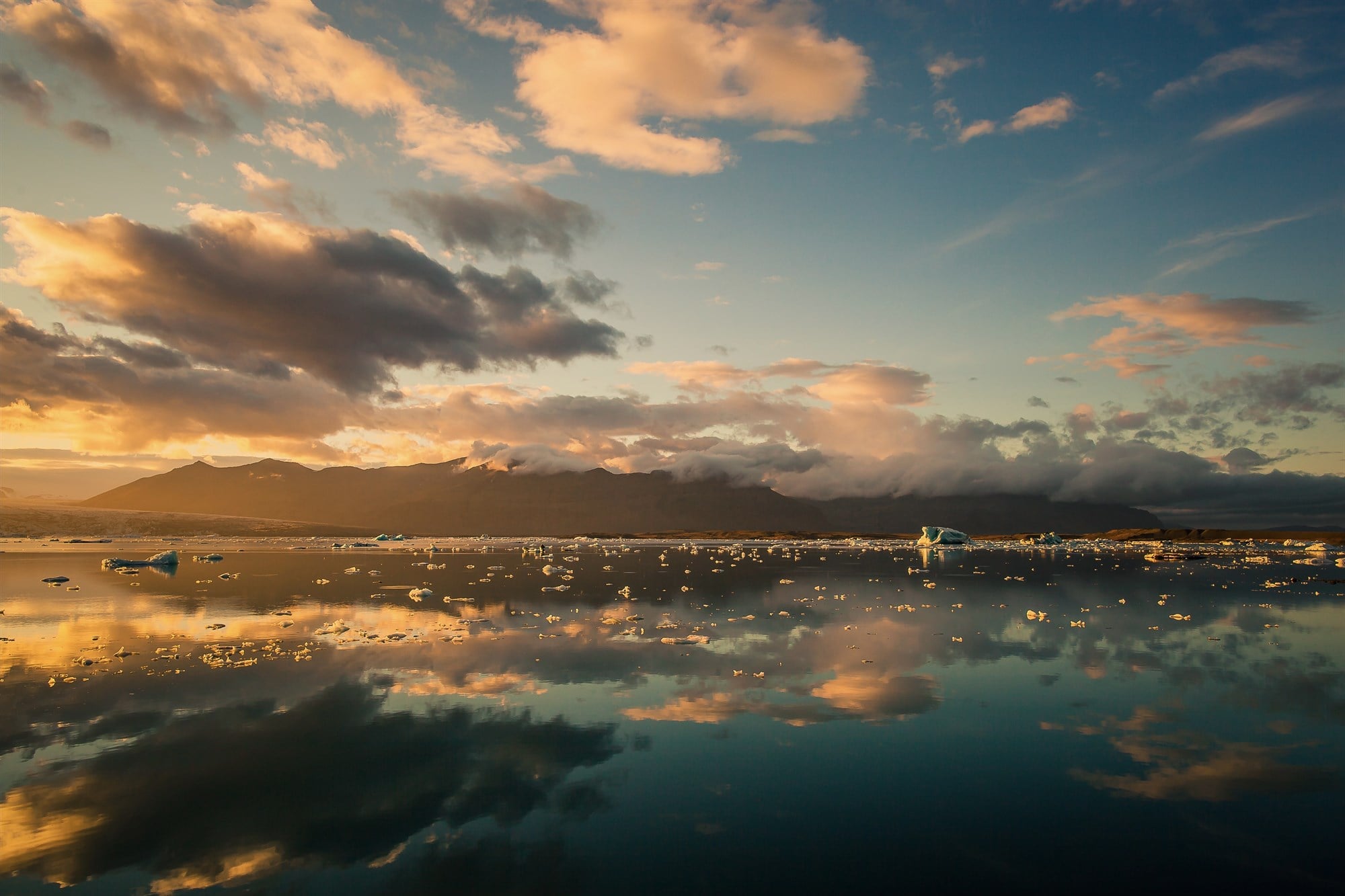
Picture: Matt Palmer
Jökulsárlón is a glacial lagoon, bordering Vatnajökull National Park in the South East of Iceland. Its still blue waters are dotted with icebergs from the surrounding Breiðamerkurjökull Glacier, part of larger Vatnajökull Glacier. The Glacier Lagoon flows through a short waterway into the Atlantic Ocean, leaving chunks of ice on a black sand beach, called the Diamond Beach. The glacier lagoon is reported to be the deepest lake in Iceland, at over 284 meters (932 feet). The lake can easily be seen from Route 1, between the town Höfn and Skaftafell Nature Reserve. During summer, you can even see seals swimming in the lagoon and by the coastline or relaxing on top of a floating iceberg. The lagoon is truly a nature jewel of Iceland. Through the year, you can visit it and be amazed by the beauty of the mirror water reflecting the ice. Enjoy it for sunset or sunrise for even more breathtaking landscapes.
Want to discover this beautiful Glacier lagoon with us? Check out our tour! Check out our Instagram guide for an image preview of the South coast!
-
Stuðlagil Canyon
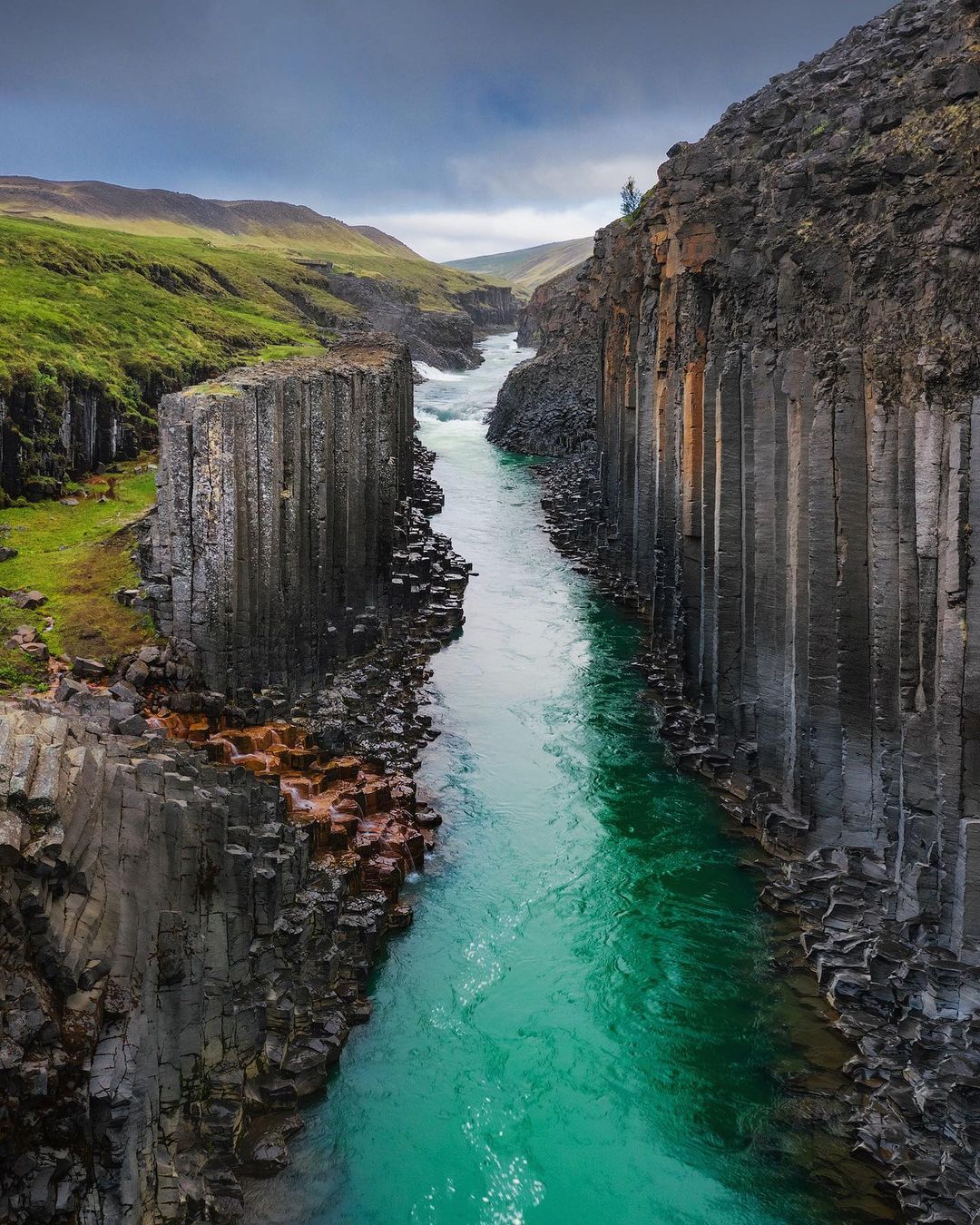
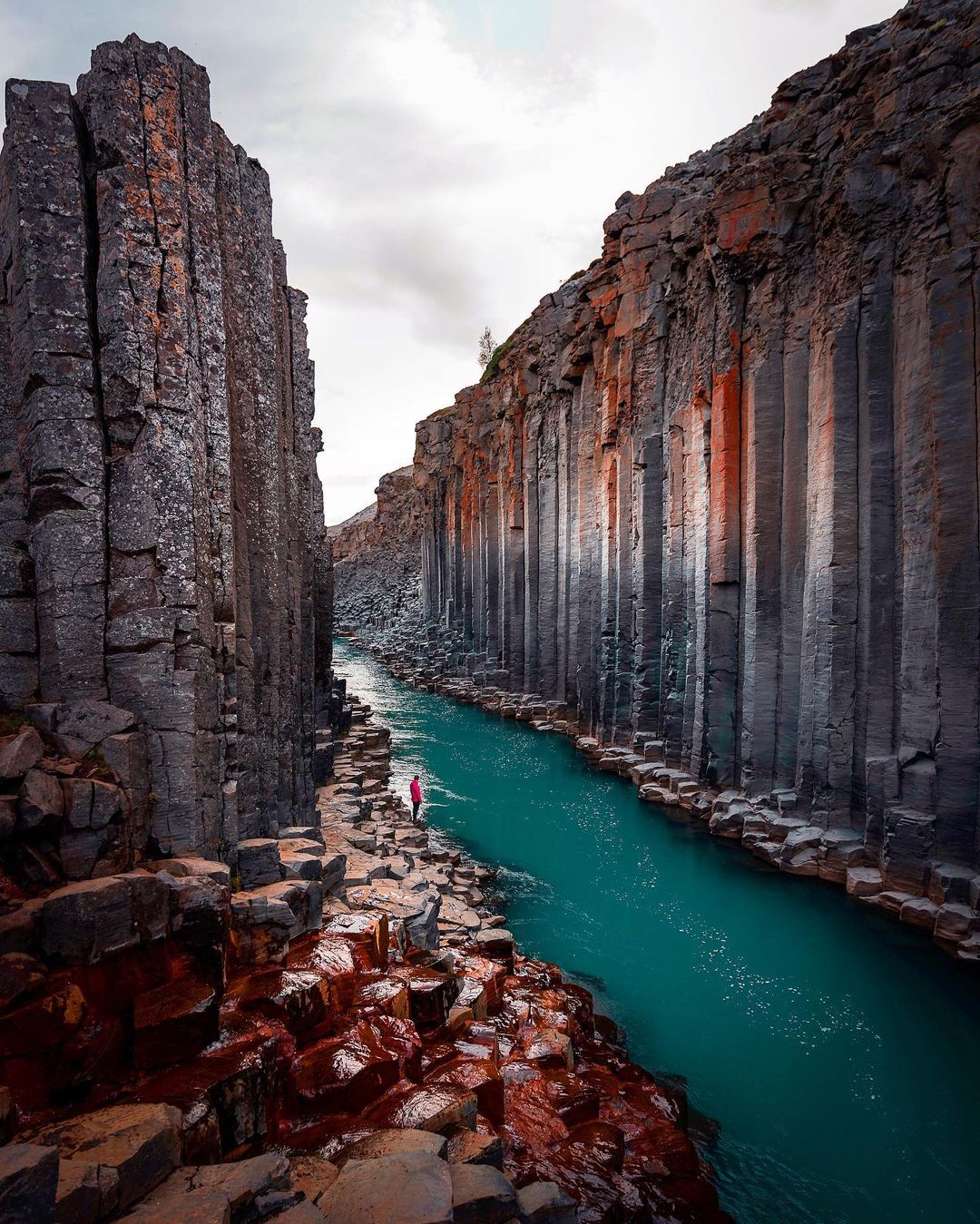
Photos: Iurie Belegurschi & Ryan Lee Banks
The Stuðlagil Canyon is located in Jökla in East Iceland. The valley Jökuldalur, also called Glacier Valley, is an impressive valley. It is in Upper Jökuldalur that the canyon Stuðlagil as well as exceptionally beautiful waterfall or Stuðlafoss Basalt Column Waterfall are located. The canyon was created when the force of a river so powerful named Jökla, but also Jökulsá á Brú and Jökulsá á Dal, forced its way from the Highlands to the North of the country. Back before the year 2009 when a a hydroelectric plant called Kárahnjúkavirkjun was introduced, the river was so powerful that the landscape was totally different from the one we know today. The water level decreased and the river was less fierce, hence the beautiful colour of the water. Enjoy a view of this natural wonder in East Iceland!
-
Hengifoss & Litlanesfoss
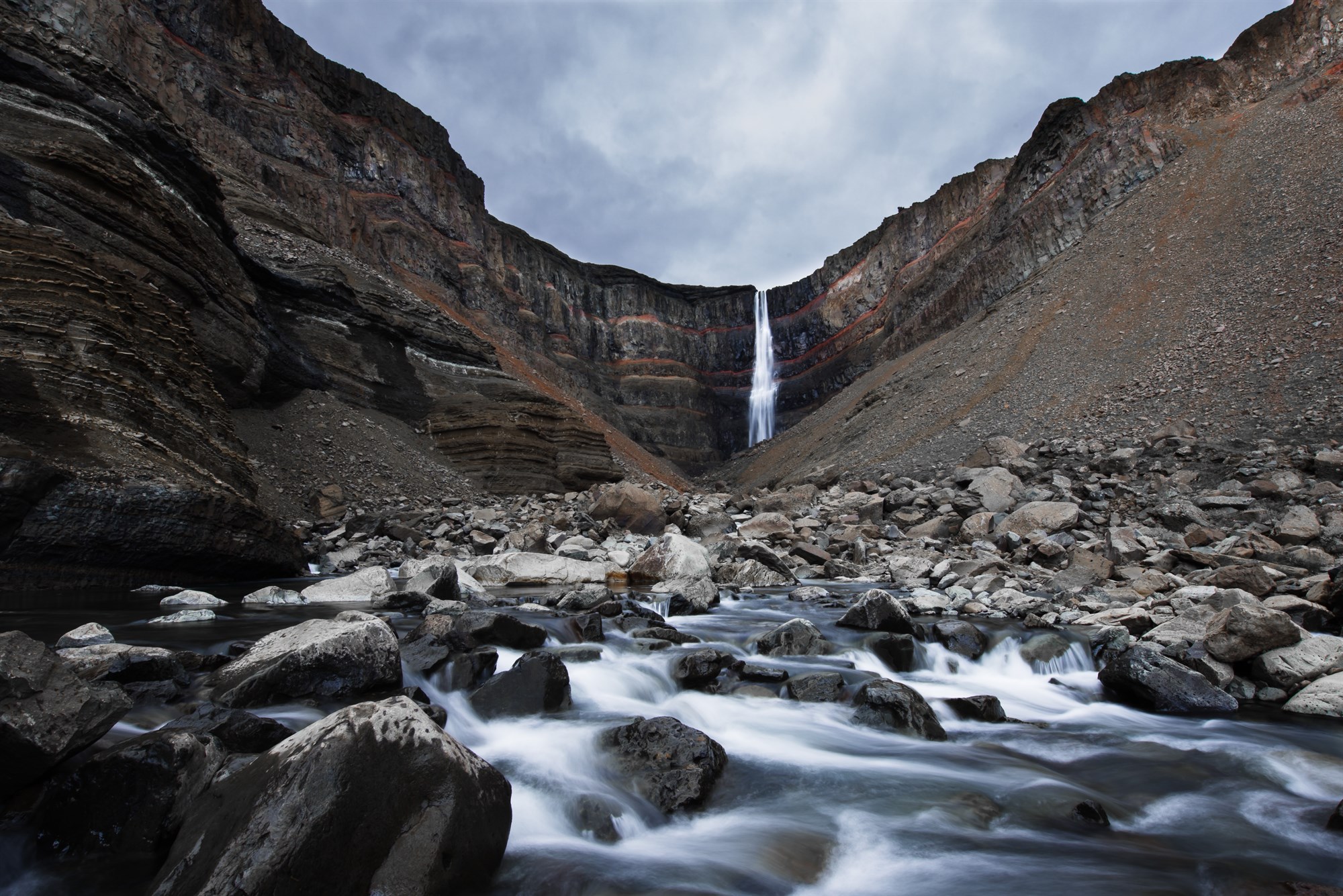
Photo: Bastien Junod
Hengifoss waterfall is easily recognisable since it is characterised by the visible layers between numerous Tertiary lava strata — 5 to 6 million years old basalt layers from volcanic eruptions — that yield a reddish colour in the cliffs around the waterfall. The red colour is due to the oxidation of the iron and the clay of sediments and old soil. This particularity makes it a very unique waterfall in Iceland. Hengifoss is the third highest waterfall in Iceland (128 meters, 420 feet) after Morsárfoss (227 meters, 745 feet) in Mosárjökull glacier and Glymur waterfall (196 meters, 623 feet). Not only the hike to Hengifoss is totally worth it for its fascinating colour palet and the impressive waterfall, you’ll see Litlanesfoss waterfall on your way up. Also called Stuðlabergsfoss, which translates to Basalt Column Falls, this waterfall is another jewel on the way to Hengifoss, making the hike even more pleasant since you’ll get to see two spectacular falls in one hike!
-
The Arctic Henge


Photos: Federico Facchini & James Rushforth
Located in Raufarhöfn, one of the most remote and northernmost villages in Iceland where the Arctic Circle lies just off the coast, the Arctic Henge consists of four six meters tall gates and one ten meters high column. The site consists of many stone arches and statues that might look like they were transported straight from ancient times, but the monument is actually modern, dedicated to pagan belief. Indeed, it was inspired by Völuspá, a poem from Edda, sort of the ‘Bible’ of Norse Mythology, taking from it the concept of 72 dwarves who represent the seasons in the world of the poem. On the site, 72 small blocks, each inscribed with a specific Dwarf name will eventually circle four larger stone monuments, which will surround a central balanced column of massive basalt blocks. The year-circle of the dwarfs becomes a kind of almanac, where each dwarf controls a five day period. All the dwarfs have been given a role and they have all their own personalities. This means that the dwarfs can be connected to birthdays and people can connect to their personal dwarf, how funny it is! Its aim is to capture the sun rays, cast shadows in precise locations and capture the light between aligned gateways. This is the perfect location to witness the Midnight Sun (link article).
-
Ásbyrgi Canyon

Photo: Iurie Belegurschi
The Ásbyrgi Canyon, also known as Shelter of the Gods, is located 80 km east of Húsavík in the North of Iceland, along the popular Diamond Circle route. It is a small corner part of the very large Vatnajökull National Park, a protected wilderness area in South Iceland centered around Vatnajökull glacier. The particularity of the Canyon is that it’s horseshoe-shaped. Centuries back, Viking settlers believed it to be a hoof-print formed by Sleipnir, Odin’s eight-legged flying horse from Norse mythology. According to geologists, Ásbyrgi was formed as the result of a disastrous flood from the nearby Jökulsá glacial river. Some people would say that it is the capital of the “Hidden People” in Iceland. The cliffs are 100 meters (330 feet) high, forming a 1 kilometre wide ring of protective shelter around the forest. You will find several hiking trails in Ásbyrgi, one leading to the beautiful Botnstjörn pond. It is a very easy hike by the cliff face, where you can see various formations, and then admire the pond which contrasts with the dark stones of the canyon, an amazing atmosphere.
-
Dettifoss & Selfoss

Photo: Luca Laconelli
Dettifoss is known as one of the most powerful waterfalls in Europe and is located in North Iceland, along the Diamond Circle. You should definitely not miss it! It is fed by the powerful glacier river Jökulsá, which flows from the Vatnajökull glacier. There, you can also visit another waterfall; Selfoss, often mistaken with the Southern town of the same name. There are different viewpoints of the waterfalls: from the east and west sides of the river, each side offering a slightly different experience. However, Dettifoss is always very impressive, no matter which side you choose. A short distance away is Selfoss, which may not be as powerful as Dettifoss but sill beautiful with its wider and numerous smaller waterfalls.
Want to discover North Iceland and the amazing Dettifoss with us? Check out our tour!
-
Mývatn
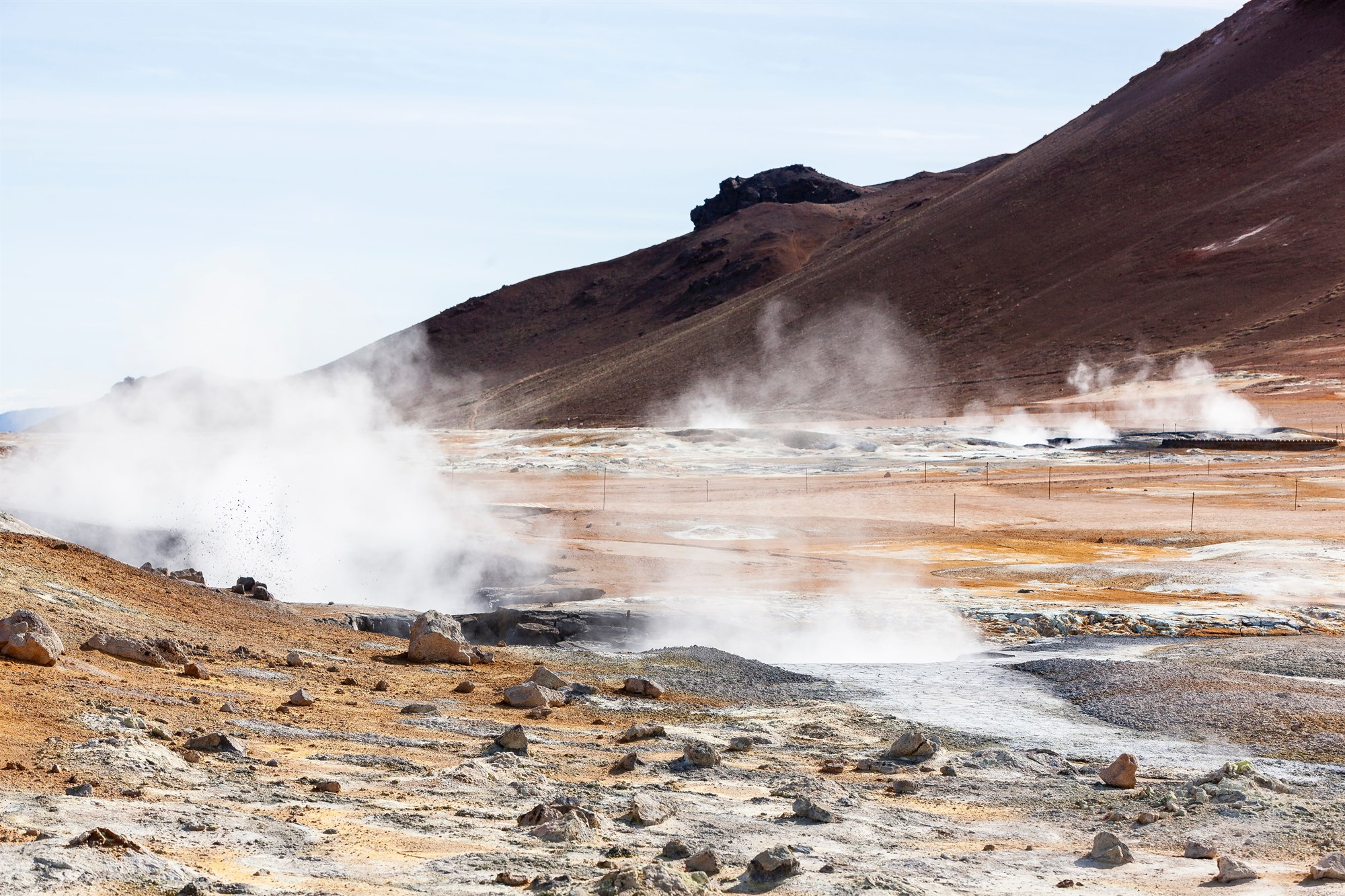
Photo: Matt Palmer
Mývatn is a beautiful lake located in North Iceland, the fourth largest in the country. The lake and its many small islands along with its surroundings are definitely not to miss during your trip to Iceland. It is home to some amazing geological features, a wide range of flora and fauna, and a peaceful atmosphere. The name 'Mývatn' translates to 'Midges Lake’; midges are probably the first animal you'll notice surrounding here if travelling in summer. This natural attraction will allow you to discover the area’s tranquility, the ever-present birdlife and the volcanic activity. Indeed, the area is an incredibly active geothermal area, where you can discover many volcanoes such as Hverfell or Krafla, but also the geothermal area of Námaskarð or the Mývatn Nature Baths.
Fun fact: Mývatn was used as a site for some scenes of Game of Thrones! During winter, the area was used to represent the lands North of the Wall.
The must-see around Mývatn:
- Hverfell volcano: Also called Hverjfall, the name of this volcano means Crater Mountain. It is a very popular hiking destination, since it can be ascended and encircled. Yes, you can even hike around the crater itself! The adventure takes about an hour. The mountain is only 420 metres tall, so hiking to the top is not difficult, the route from the parking being easy and accessible.
-
Námaskarð on Mount Námajfall is a geothermal area. The landscape is incredible since it is brightly colourful and the boiling mud all around the place makes it very special. Being there feels like being on another planet. There you can not only see but also hear the sound of the earth.
- Mývatn Natural Bath: The amazing pool of Mývatn is surrounded by nature and heated by the geothermal forces of the area. The blue waters and the sauna are the perfect combination for a moment of relaxation after a hike or a day on the road. During winter, it's the perfect place to admire the Northern Lights.
- Grótagjá: Grjótagjá is a hidden hot spring cave near Mývatn, renowned for its beauty and clear waters. Even though you cannot take a bath there, the visit is definitely worth it!
Want to discover North Iceland and Mývatn with us? Check out our tour!
-
Goðafoss
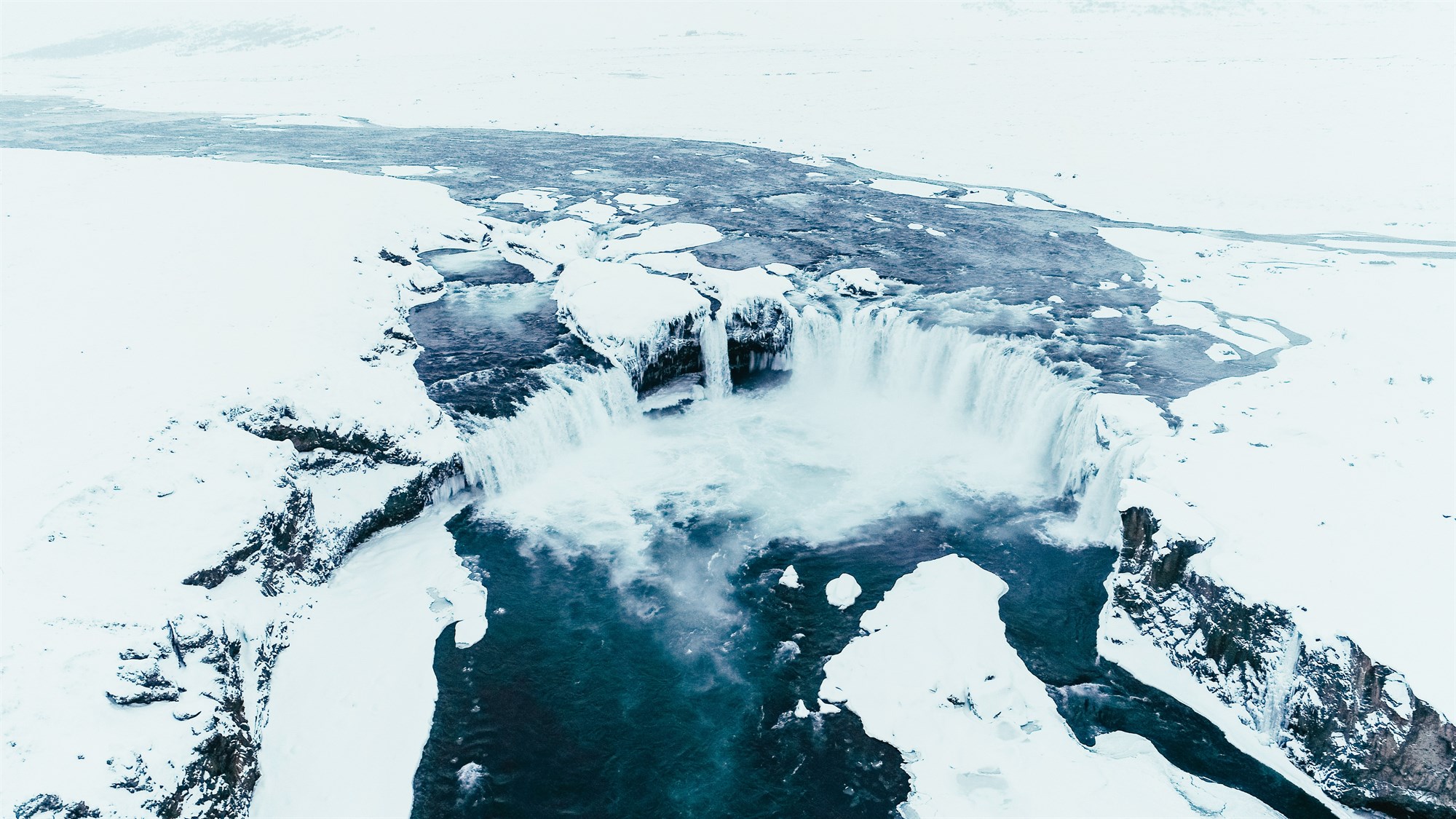
Photo: Shawn Ang
Goðafoss waterfall is located in the river Skjálfandafljót in North Iceland. It is 12 meters high and 30 meters wide, one of the most famous waterfalls in North Iceland but also in the country at large. According to the sagas — prose narratives mostly based on historical events that mostly took place in Iceland in the ninth, tenth, and early eleventh centuries — the name Goðafoss comes from the time when lawspeaker Thorgeir Ljosvetningagodi settled a religious crisis in Iceland by throwing the idols of the old Nordic gods (such as Thor, Odin, Loki and Freya) into the fall, hence the name “The waterfall of the gods“, which fits perfectly the beautiful landscape that the waterfall offers. You can admire it from both sides of the river and you can even access it going down to see it from close.
Want to discover North Iceland and the incredible Godafoss with us? Check out our tour!
-
Hvítserkur
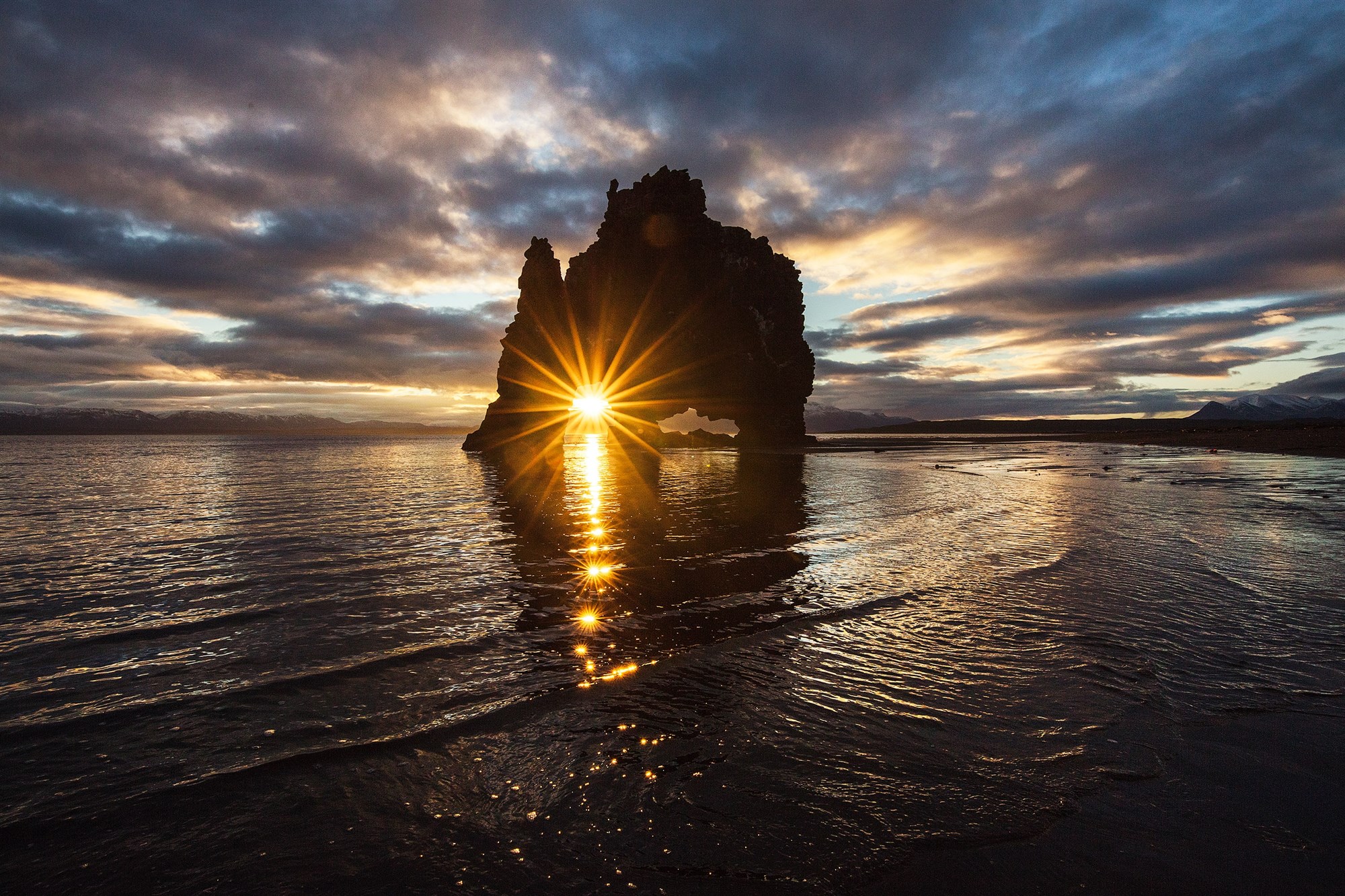
Photo: Joshua Earle
Hvítserkur is a 15 meters (49 feet) high basalt stack, an eroded volcanic dyke, along the eastern shore of the Vatnsnes peninsula, in northwest Iceland. As many rocks like this in Iceland, the legend goes that Hvítserkur is a petrified troll. It is also said that since the rock has two holes at the base, it gives it the appearance of a dragon who is drinking. You can either see Hvítserkur from above or walk down to it. During summer, you’ll get to see lots of fulmar and seagulls there, which gives the impression that it is constantly in motion!
-
Dynjandi

Last but not least to finish our top attractions tour: Dynjandi, also called Fjallfoss. This beautiful waterfall is located in the Westfjords of Iceland. It is often known as the “Jewel of the Westfjords”, and it’s a well-deserved name; 100 meters high and a hair-shaped form, it’s a must see in the Westfjords. There are 6 other waterfalls below Dynjandi — Hæstahjallafoss, Strompgljúfrafoss (Strompur), Göngumannafoss, Hrísvaðsfoss-Kvíslarfoss, Hundafoss and Bæjarfoss (Sjóarfoss), one of them passes on the way up to the biggest waterfall. Thus, the short trail to get there is beautiful — no more than 15 minutes or so. Don’t miss it!
And here ends our guide to the 20 top attractions of Iceland. Obviously, there is much more to see in Iceland, but it will be very much longer to list it all here! Check out our tours and our website for information during your trip.
For more pictures preview of Iceland, check out our guide and follow us on Instagram! @ReykjavikTourist

